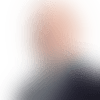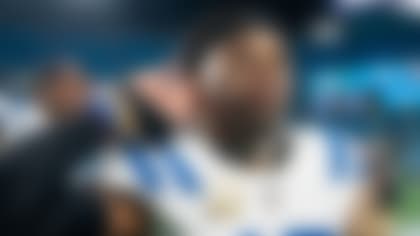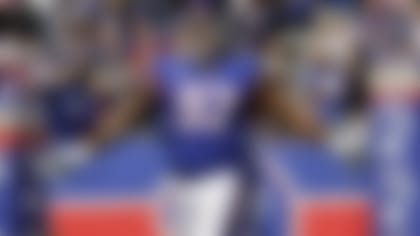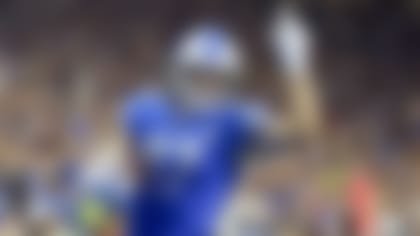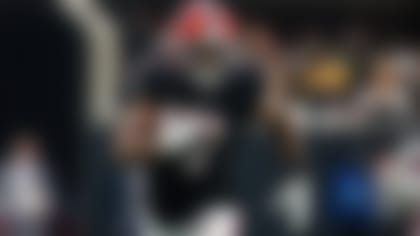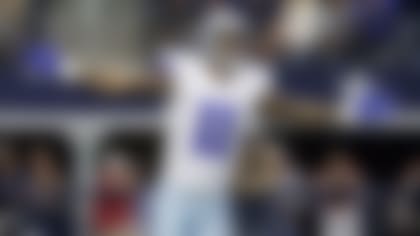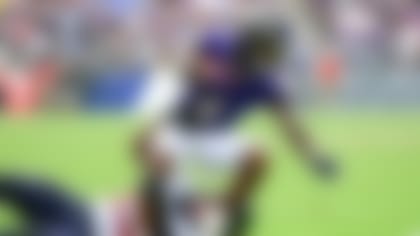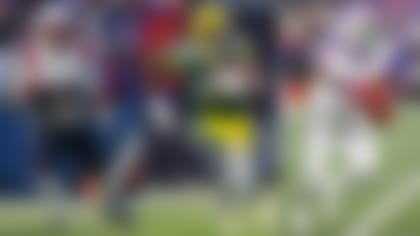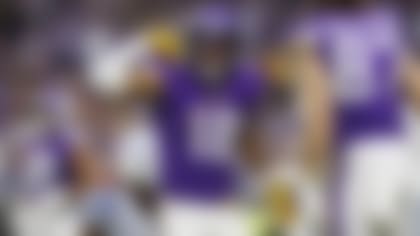After turning the page on first-round draft bust Blaine Gabbert and the Gene Smith-Mike Mularkey regime after a disastrous 2012 season, Jacksonville's ownership embarked on a grueling, long-term rebuilding effort with the No. 3 pick of the 2014 draft as the centerpiece. Between nascent franchise quarterback Blake Bortles and the receiver duo of Allen Robinson and Allen Hurns, there was enough promising talent on hand to chase free-agent tight end Julius Thomas with hopes of developing a high-octane attack in Duval County. When Bortles came through with a franchise record-setting breakout season, general manager David Caldwell concentrated on the other side of the ball, infusing the defense with talented players at all three levels.
The 2016 season was billed as the reward for all of those Jaguars fans who suffered through multiple attempts at reconstruction. Buoyed by the NFL's most improved roster, Jacksonville was a trendy postseason pick for the second straight summer. Just a few months later, coach Gus Bradley's job is in jeopardy and his quarterback is holding the rest of the team hostage. It's a sad state of affairs.
With that in mind, let's take a look at the 10 biggest franchise question marks across the NFL, starting with that very Jaguars quarterback:
1) Blake Bortles, QB, Jacksonville Jaguars: Can the franchise savior be salvaged? Plagued by an awkward, hitch-filled throwing motion that would make even Tim Tebow blush, Bortles is a broken player as of the midpoint in his third NFL season. It's not unusual for quarterbacks with injured arms or flawed mechanics to pad their stats on the losing end of blowouts, finally afforded time to scan lax defenses for open passing windows in garbage time. This is the state of Jacksonville's offense: a dysfunctional, chaotic mess incapable of moving the chains while the game remains competitive.
"I don't know where it came from or why," Bortles acknowledged to CBS analyst Phil Simms in Week 8, "but my motion's getting longer."
This is an issue that goes back to Bortles' rookie-year struggles. With the aid of sports biomechanics guru Tom House, he fixed the problem in the offseason of 2015, only to backslide late this summer. On the hot seat or not, Bradley can't continue to play a quarterback with obvious physical and mental hang-ups. Tasked with mastering complex game plans each week, the 56th-ranked player on the "Top 100 Players Of 2016" list simply doesn't have the luxury of concentrating on his delivery to the extent it would take to fix it right now. Can a return trip to House provide a solution during the offseason? If so, how long will it stick this time? A few months? The entire 2017 season? A few years? The rest of Bortles' career? It's a franchise-altering conundrum for the Jaguars' front office.
2) Jared Goff, QB, Los Angeles Rams: Ever since the tandem of Matt Ryan and Joe Flacco combined for 22 wins in 2008, expectations for rookie quarterbacks have undergone a dramatic shift. First-round draft picks at other positions were always expected to play instantly, with mid-to-late-round choices reserved for developmental prospects. For nearly a decade now, that same paradigm has applied to quarterbacks: a first-round investment ideally translates to Week 1 starter. When the organization sacrifices two draft classes to trade up for the No. 1 overall pick, that expectation rises exponentially.
When Goff struggled to master Rob Boras' playbook in offseason practices, that was understandable. He played in Cal's "Bear Raid" spread offense, which doesn't require quarterbacks to handle the verbiage and communication required in the NFL. When Goff was overwhelmed by his pre-snap responsibilities and the post-snap speed of defenses in preseason action, that was also understandable. He needed time to develop. Three months into his rookie season, though, it's alarming that the 3-5 Rams believe Goff is not yet a better quarterback than physically limited journeyman Case Keenum. While it's premature to discard Goff as an epic draft bust, it's fair to wonder when the franchise's windfall investment might start paying dividends. And when Goff is finally deemed ready, will he be worth the Godot-like wait?
3) Carson Palmer, QB, Arizona Cardinals: The title of the Amazon documentary series speaks volumes: "All or Nothing." Entering the twilight years of their sterling careers, Palmer and Larry Fitzgerald were handed one-year contract extensions in early August -- a tacit acknowledgement that the Cardinals were entering a crucial Super Bowl-or-bust stretch before the window closes on the franchise quarterback and Hall of Fame wide receiver.
Is that window already closing prematurely? Sporting amazing pocket movement for an aging dropback passer, Palmer played the best ball of his career in 2015, leading the NFL's most dangerous offense. That ability to escape pressure has vanished this season behind an offensive line that can't block well enough to support the deep QB drops in Bruce Arians' offense. The Cardinals can retool their philosophy next offseason to feature the dynamic David Johnson, complementing a swarming, star-studded defense. At age 37, Palmer will be paid like an elite quarterback even if his role is minimized as his skills diminish. That's not a competitive asset. It's time for Arians to unearth his quarterback of the future.
4) Adrian Peterson, RB, Minnesota Vikings: The Vikings will have several glaring questions to answer next offseason. Will Teddy Bridgewater be healthy enough to recapture his promise as the future face of the franchise after suffering a gruesome knee injury this past summer? If so, where does that leave Sam Bradford, who is under contract through 2017? Beyond the quarterback conundrum, the team's brass will have to decide whether to hang on to Peterson -- the ghost of the Vikings' past decade.
Does Peterson have a legitimate chance to return from meniscus surgery in December or January? If that doesn't happen, we might never see the greatest offensive player in franchise history donning the purple again. The Vikings owe Peterson $17.75 million in 2017, including a $6 million roster bonus in March. Set to turn 32 years old in that month, Peterson won't get that money. Both he and the Vikings knew that when his contract was signed. Is he willing to accept less from an organization he was determined to flee as recently as the offseason of 2015? As determined as Peterson is to bypass Walter Payton and John Riggins as the most productive "old" runner in history, is it in Minnesota's best interest to build the offense around a declining one-dimensional power back?
5) Tony Romo, QB, Dallas Cowboys: Two years removed from a legitimate MVP run, Romo is an afterthought behind Dak Prescott as the Cowboys boast the NFC's best record courtesy of a seven-game winning streak. Barring a multi-outing slump or an injury to the hotshot rookie, Romo will spend the next two months sporting a visor. It's abundantly clear that Prescott is the quarterback of the future -- and the future starts now.
Where does that leave Romo in Dallas' plans? He's started just four games since the beginning of last season. There's no telling if his body can make it through a grueling 16-game schedule after multiple back and collarbone injuries. Considering Prescott's minuscule salary, the Cowboys can afford to keep Romo on the roster as the highest-paid backup in history. Is that a palatable option for one of the league's top dozen quarterbacks entering his age-37 season? Will Romo restructure his contract to ease a trade to a QB-needy organization such as the Jets or Bears?
6) Sheldon Richardson and Muhammad Wilkerson, DLs, New York Jets: Richardson and Wilkerson have been battling to be the face of the Jets' post-Darrelle Revis defense since the former arrived on the scene in 2013. While Wilkerson had emerged as the team's most disruptive defensive force, the younger Richardson was viewed as the more ideal building block -- until character issues arose in the summer of 2015. After drafting Leonard Williams as an eventual replacement for one of the two stud defensive ends, the front office ultimately made Wilkerson one of the league's highest-paid defenders this past summer.
Now the Jets boast an embarrassment of riches upfront, right? Not so fast. Wilkerson is on pace for less than half of the 12 sacks he posted in last year's contract run. Richardson was shopped hard at the trade deadline, leaving his New York future in serious doubt. Billed as building blocks for the next Jets contender, both players have shown a troubling lack of commitment, culminating in last week's first-quarter benching. Will Todd Bowles' message succeed as an effective wake-up call for Wilkerson? Will Richardson be shipped out in advance of next year's draft? Beyond Williams, where is the beating heart of a once-mighty defense?
7) Kirk Cousins, QB, Washington Redskins: General manager Scot McCloughan neglected to meet the long-term contract demands of his franchise-tagged quarterback for an obvious reason: Cousins isn't talented enough to carry an offense. He must be supported by a stout offensive line, a consistent ground attack and talented pass catchers such as Jordan Reed and DeSean Jackson. In other words, Cousins can be a competitive advantage at a discount rate. If the Redskins are forced to allocate 15 percent of the salary cap to a league-average quarterback, though, that advantage disappears. Once Cousins gets paid, sacrifices will have to be made at other positions.
Much like Joe Flacco prior to his enriching Super Bowl XLVII run, Cousins has opted to bet on himself -- rejecting an offer that included $16 million annually and $24 million in guarantees. At the quarter-season mark, that appeared to be a foolhardy decision. As of midseason, Cousins has rebounded enough of late to make his Washington future an even proposition. If the 4-3-1 Redskins make a second straight postseason appearance, it solidifies the future of the offensive nucleus. If the team nosedives in December, though, it's fair to wonder what will become of Cousins and the free-agent receiver tandem of Jackson and Pierre Garcon.
8) Sammy Watkins, WR, Buffalo Bills: When the Billssurrendered extra first- and fourth-round picks to move up five spots in the draft for Watkins, the expectation was that he would not only emerge as a top-flight receiver but also the face of a franchise lacking in star power. Three years into his career, Watkins has mixed flashes of transcendence with lengthy disappearing acts. With a physical, tackle-breaking playing style that borrows as much from running back as wide receiver, it's fair to wonder if injuries will haunt Watkins throughout his prime.
One of the reasons the Bills were reluctant to reward Tyrod Taylor with a mega contract was his inability to get the ball to his No. 1 receiver with consistency. Taylor struggles to see the middle of the field, where Watkins excels on slants and crossing routes. Considering the recent success of a run-dominant offense featuring Taylor and LeSean McCoy, should the Bills still view Watkins as a franchise-caliber player worthy of a second contract that would align with the game's most productive receivers?
9) Alshon Jeffery, WR, Chicago Bears: The Bears are facing a similar scenario with Jeffery, albeit a more pressing one. Three years ago, Chicago featured a high-flying offense that finished second in points. The future was bright with Pro Bowl running back Matt Forte and the triple towers of Jeffery, Brandon Marshall and Martellus Bennett catching passes from the golden arm of Jay Cutler. By the time free agency kicks off in March, Cutler and Jeffery could join the other three as former Bears.
Playing out the season under the franchise tag, Jeffery isn't producing well enough to get the front office excited about a new long-term deal before he becomes the most coveted wideout on the open market. The enigmatic fifth-year star has even fallen behind tight end Zach Miller and slot receiver Eddie Royal at times this season. Scouts and executives have questioned Jeffery's injury history, speed, hands and ability to anchor a passing attack as the No. 1 threat. Will the Bears acknowledge those concerns, resigning to a full-blown rebuilding project on offense?
10) Brock Osweiler, QB, Houston Texans: When the Texans suffered the ignominy of a 30-0 season-ending thrashing at the hands of the Chiefs last January, the team's brain trust identified quarterback Brian Hoyer and a lack of speed as the primary culprits. Lured away from Denver via a mega deal that raised eyebrows around the league, Osweiler was immediately billed as a major upgrade at professional sports' most important position. Once the Texans signed playmaking tailback Lamar Miller and drafted speedy deep threat Will Fuller, it was fair to wonder if the Osweiler-led offense would be the NFL's most improved.
Fast-forward eight games into Osweiler's Houston career. After his quarterback managed an historically inept 3.2 yards on 41 pass attempts, Bill O'Brien was met with local reporters wondering when he might consider benching his $72 million quarterback. For all of those resources poured into the offense, Osweiler's attack has been a marked downgrade on the smoke-and-mirrors show run by Hoyer (among others) in 2015. Houston's offense ranks dead last in touchdowns (12) and 31st in Football Outsiders' efficiency metrics. Osweiler has yet to demonstrate the accuracy, field vision, pocket movement and streamlined delivery of a franchise player, ranking 33rd of 33 quarterbacks graded by Pro Football Focus this season. If he doesn't show significant progress in the second half of the season, O'Brien will be left wondering how to upgrade a position that already occupies a substantial portion of the salary cap.
More franchise questions marks:Jimmy Garoppolo, QB, New England Patriots; Ryan Tannehill, QB, Miami Dolphins; Colin Kaepernick, QB, San Francisco 49ers; Cody Kessler, QB, Cleveland Browns; Eddie Lacy, RB, Green Bay Packers; Jamaal Charles, RB, Kansas City Chiefs; Roberto Aguayo, K, Tampa Bay Buccaneers.
